During these days of “home sheltering,” it is so important to find ways to get out of the house (social distancing, of course) and take advantage of the increasingly warmer weather. Many are taking advantage of our community’s wonderful parks, but here’s another idea: Go hunting for some of the interesting historic sites and structures that can be found in Champaign-Urbana.
How do you find them? To commemorate America’s Bicentennial in 1976, the Champaign County Bicentennial Committee published a 50-page booklet titled Historic Sites in Champaign County. The little 6” x 9”, 50-page publication identifies 78 specific locations throughout the county (44 in Urbana and Champaign; 34 elsewhere). It includes a picture and brief description for each site along with maps marking their location with numbers that correspond to an official sign that commemorated the designation.
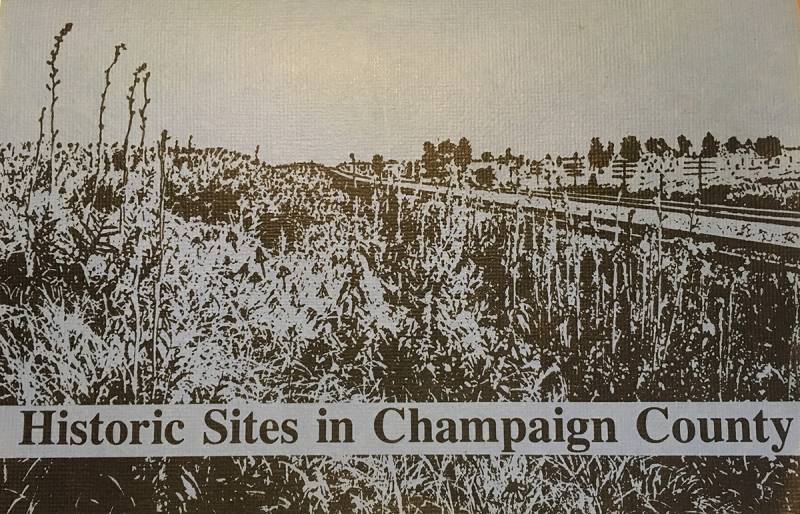
The cover of the Historic Sites in Champaign County booklet. The image is the Illinois Central Railroad Tracks north of Rantoul with surrounding prairie. Image from Champaign County History Museum, cover design by David Monk, 1976.
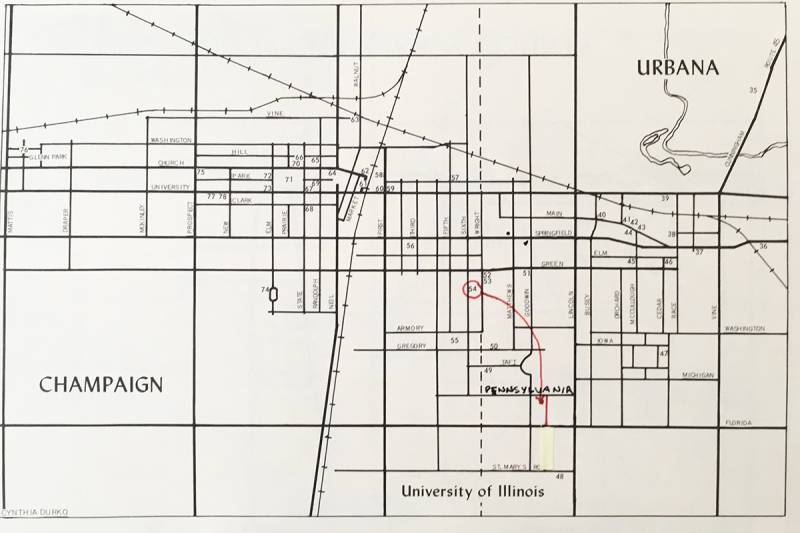
Map design by Cynthia Durko, 1976. Image from Champaign County History Museum.
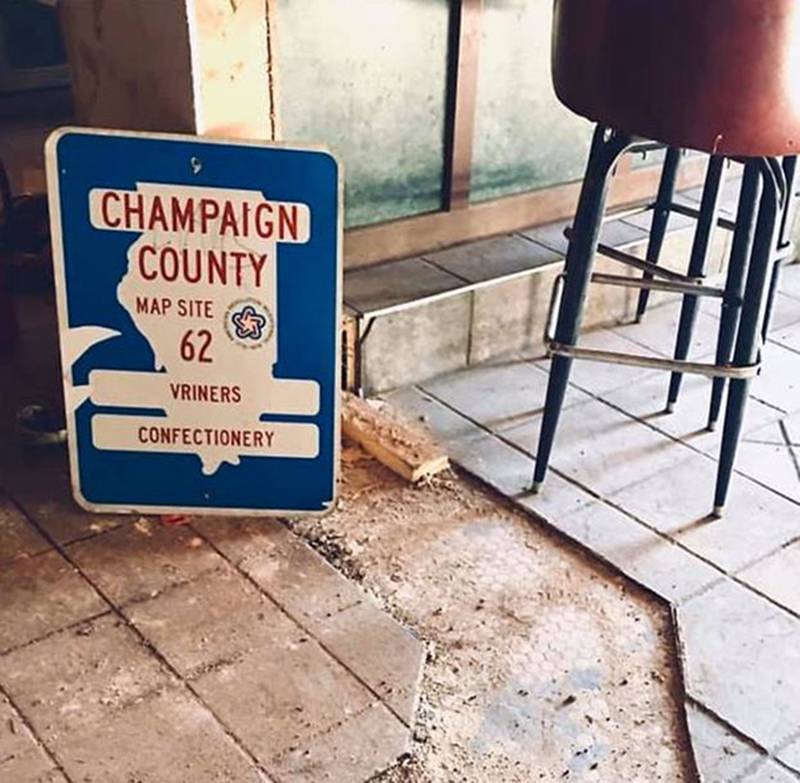
CCHM Board members Perry Morris and Suzanne Brock discovered the sign on a visit to the building, now being remodeled by new owners. Photo by Suzanne Brock.
These little booklets are still available at the Champaign County History Museum, and many can also be found at local libraries. Unfortunately, with these places now temporarily closed, hopeful “history hunters” need another option. As a project for the museum, I spent two summers visiting each of these sites to determine what was still around, what was not, and what condition existing structures were in. Destinations sometimes involved a bit of detective work, especially for the long-gone rural locations. Practically no signs remain at the rural sites, but some can still be found in Urbana and Champaign.
This is the first in a series of articles that will identify these sites, explain how to find them, and provide a bit of the story behind each. I will begin with a general overview of the project and pay homage to some significant locations that sadly are gone. The Runnel Fielder Cabin Site north of Urbana is #1 in the book. Fielder “squatted” on the site in 1822, becoming the first settler in what is now Champaign County. The long-gone cabin (Fielder moved on to Tazwell County in 1830) was located on a ridge west of what is now N. Cottonwood Rd., about 1 mile north of U. S. Route 150. It is a beautiful location to simply visit and imagine the past.
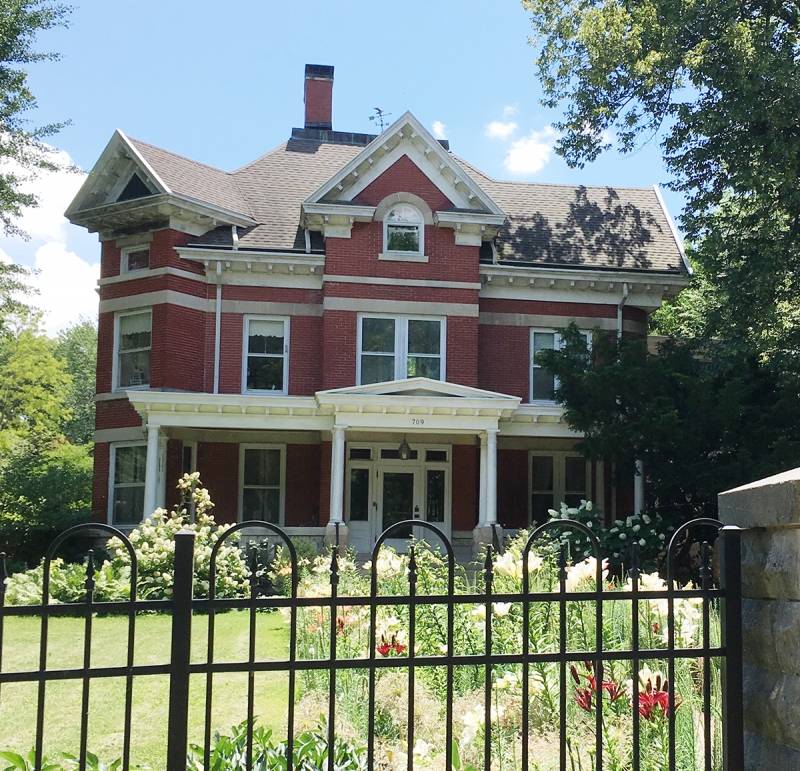
Photo by Rick D. Williams.
The last entry, #78, is the Wilbur Mansion at 709 E. University Avenue in Champaign. Robert and Elizabeth Wilbur built this home between 1903-1907 for their daughter, Ella, who married in 1913 and lived in the house until the 1930s. It was the home of the Champaign County History Museum from 1974 until 1997. The grand house became a residence once again when the Museum sold it and moved to the historic Cattle Bank building (site # 59, which we will be featured in a future article).
In Urbana and Champaign, 13 of 17 residential sites are still standing. The expansive and elegant “Cunningham Mansion” (built in 1870 north of Urbana), which became the original Cunningham Children’s Home building in 1894, was razed in the 1920s when the campus modernized. Also sadly gone is the Jaques House (formerly at 207 W. Elm, Urbana). Severely damaged during a relocation attempt in the late 1990s, it was demolished in 2001. The Busey House (formerly at 503 W. Elm, Urbana), built in the 1860s, housed the local Baha’i Center from 1949 until it burned in 1987.
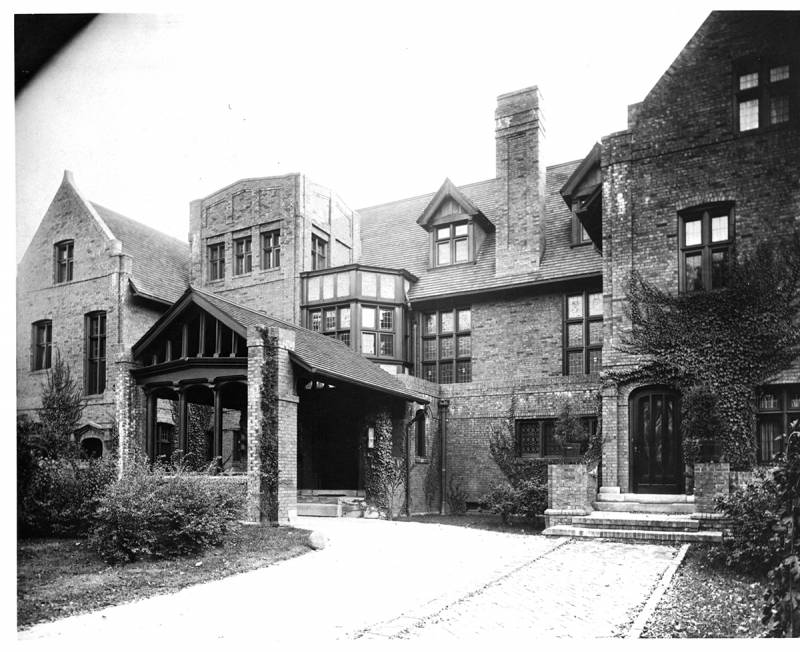
Photo from Champaign County History Museum.
Champaign’s B. F. Harris House (formerly at 809 W. Church) was one of the more recently lost historic sites. Constructed in 1904, this 25-room home was originally the family residence of B. F. Harris II, grandson of the local cattle baron and banking legend of the same name. It was the site of a notorious 1929 robbery that occurred during a lavish party that included many prominent and well-heeled guests. The story of the house and the heist is currently the subject of a fascinating exhibit at the Champaign County History Museum. In the late 1950s the house was renovated into the Cole Hospital, which became part of Carle Pavilion in 1988. By the late 2000s the old building was deemed no longer useable, and it was torn down in 2012.
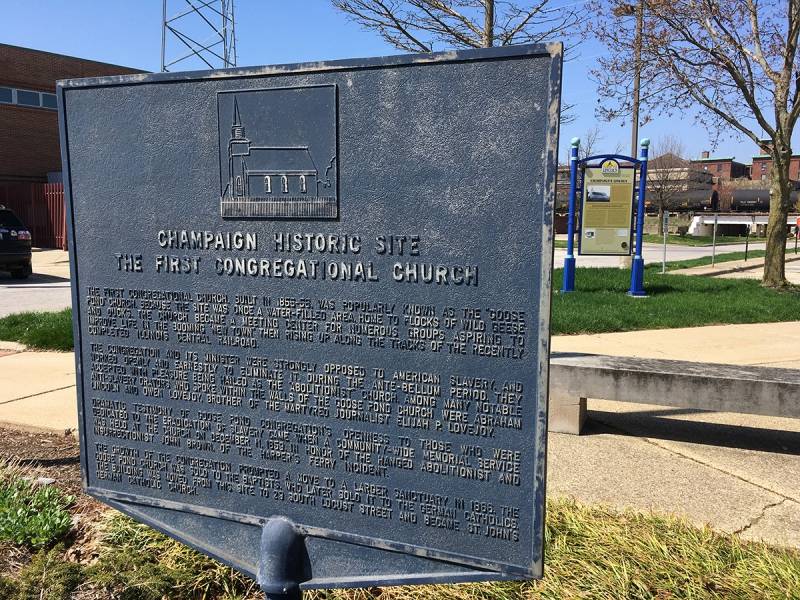
Photo by Rick D. Williams.
All of the designated commercial/institutional sites in Urbana and on the University of Illinois campus (nine total) remain intact. Champaign has lost a few. Its first house of worship (the Congregational Church) and its first train depot/hotel (the Doane House) were built around the same time (1855-56) near one another between the Illinois Central Railroad and First Street, north of what is now University Avenue. Both were gone by the 20th Century. When the Congregationalists moved to Park Street in 1866, their building (also known as the “Goose Pond Church”) passed to the German Catholic congregation and was relocated two blocks south in 1872. The Doane house was destroyed by fire in 1898.
Champaign’s original schoolhouse, known as the “Little Brick” (southwest corner of Hill and Randolph) was also constructed around the same time (1855), but on the west side of the tracks. The school was also used for early church services and public meetings. “Little Brick” was razed in 1992 to make way for the original Central High School. The grand Metropolitan Building (219-225 N. Neil) was a more recent loss, destroyed in a spectacular fire on November 7, 2008. You can read more about that here.
Existing historic sites in Champaign-Urbana include the County Courthouse, five churches, six locations on the University of Illinois campus, the Cattle Bank, the Virginia Theater, the Burhnam Athenaeum (now Meyer Capel Law Offices), the old Vriner’s building, and numerous stately residences, as well as the Tompkins Cabin site (near Courier Café), Leal Park, the Lincoln Statue at Carle Park, Boneyard Creek, the Illinois Central Railroad complex, West Side Park, and workers’ cottages in Glenn Park Neighborhood (once associated with the old Bonner Tool Factory).
Many of these existing sites can easily be found and visited on your own. To learn more about their stories and significance, follow along we start our “virtual tour” in Urbana, where Champaign County began.








